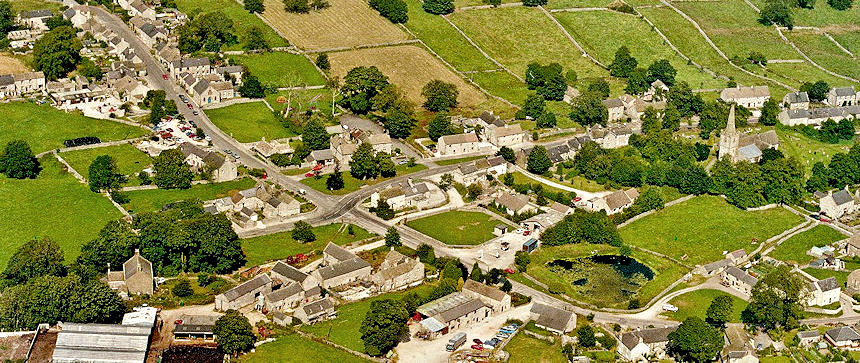
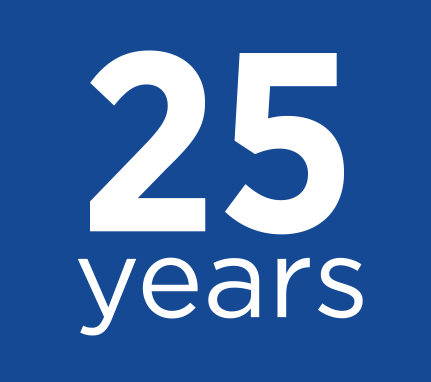 Tuesday, August 16th 2022:
Tuesday, August 16th 2022:
Steve Birkill recalls Pete Atkin’s Monyash Festival appearance on this date in 1997
It was twenty-five years ago today when Pete Atkin and Julie Covington stepped out onto a makeshift stage in what was then my back yard, and proceeded to delight an audience of over 200 fans with over 2½ hours’-worth of songs Pete had written with lyricist Clive James — yes, that Clive James, the Aussie guy. But it didn’t happen overnight.
Cambridge Footlights
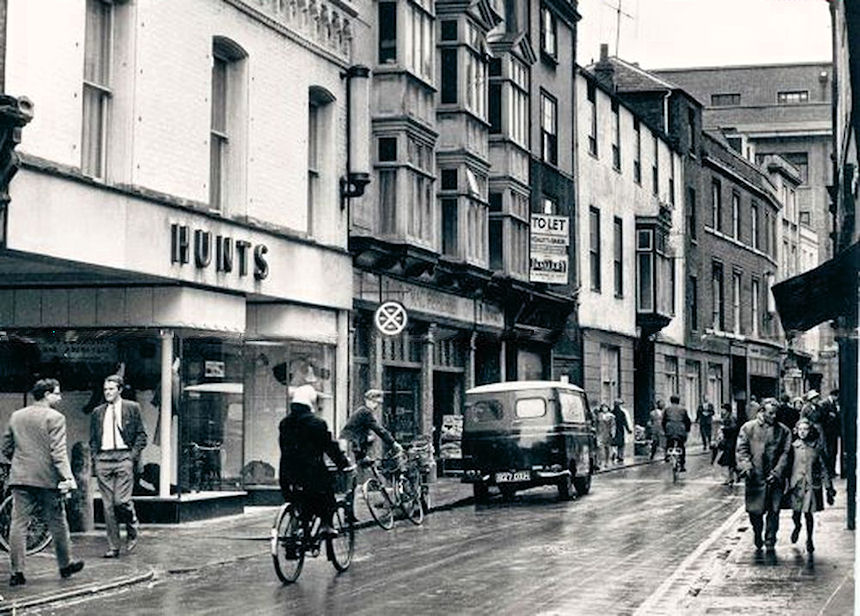 The story goes further back, over thirty years more, to the day in 1966 when Clive and Pete first met in a room above a branch of fishmonger chain Mac Fisheries in Petty Cury (since buried beneath the Lion Yard development) in the centre of Cambridge. Both students at the University (Pembroke and St John’s respectively) they were drawn independently to the Footlights Dramatic Club as an outlet for their creative talents, Pete as a singer and songwriter and Clive as a humourist, critic, essayist, wit, poet, monologuist and general wizard with words. They bonded over a shared love of jazz and popular music, and a desire to get involved in its creation. To that end they spent long, late hours in that clubroom hunched over the Club’s old piano, crafting their sad, thoughtful, ironic and witty songs into shape.
The story goes further back, over thirty years more, to the day in 1966 when Clive and Pete first met in a room above a branch of fishmonger chain Mac Fisheries in Petty Cury (since buried beneath the Lion Yard development) in the centre of Cambridge. Both students at the University (Pembroke and St John’s respectively) they were drawn independently to the Footlights Dramatic Club as an outlet for their creative talents, Pete as a singer and songwriter and Clive as a humourist, critic, essayist, wit, poet, monologuist and general wizard with words. They bonded over a shared love of jazz and popular music, and a desire to get involved in its creation. To that end they spent long, late hours in that clubroom hunched over the Club’s old piano, crafting their sad, thoughtful, ironic and witty songs into shape.
 At that time the Footlights’ blend of music and comedy was riding high: the days of raw satire were behind them and the dominance of ‘stand-up’ hadn’t begun. The numerous ‘smokers’ and revues scattered through the University calendar quite dazzled with snappy comedy sketches and brilliant musical numbers, and offered the perfect proving ground for the pair’s new songs. It fell to Pete to physically perform most of the solo works, alone or with the show's band-members, with the rest of the comedy troupe (of which many were destined to become famously successful in their own fields of endeavour) joining in for the ensemble pieces.
At that time the Footlights’ blend of music and comedy was riding high: the days of raw satire were behind them and the dominance of ‘stand-up’ hadn’t begun. The numerous ‘smokers’ and revues scattered through the University calendar quite dazzled with snappy comedy sketches and brilliant musical numbers, and offered the perfect proving ground for the pair’s new songs. It fell to Pete to physically perform most of the solo works, alone or with the show's band-members, with the rest of the comedy troupe (of which many were destined to become famously successful in their own fields of endeavour) joining in for the ensemble pieces.
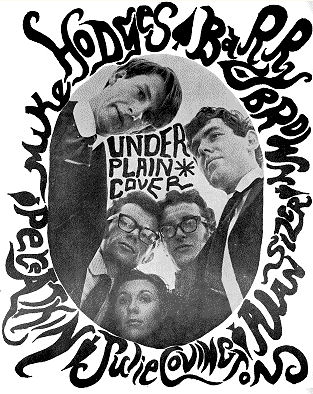
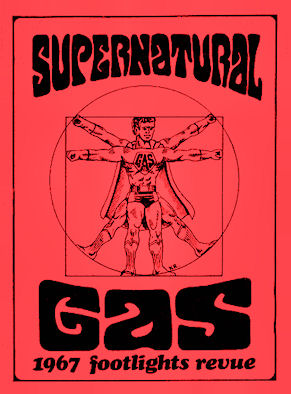
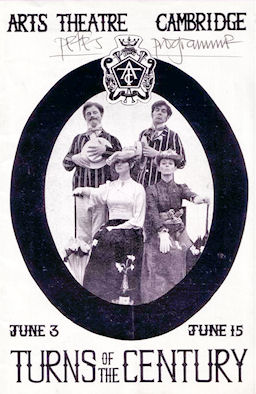
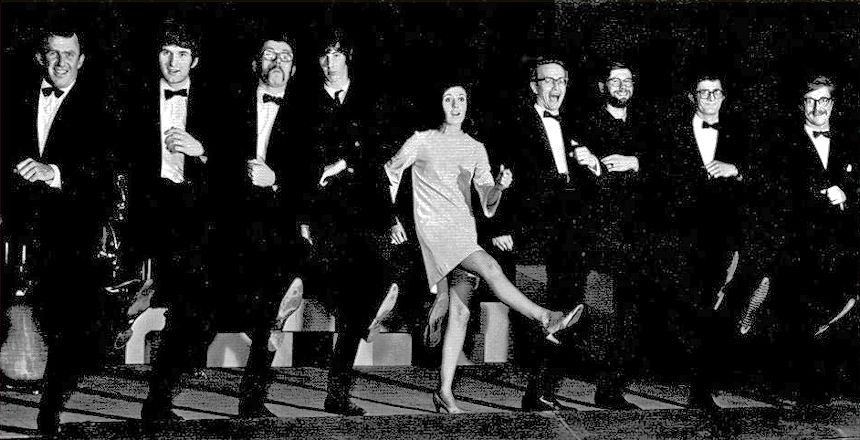
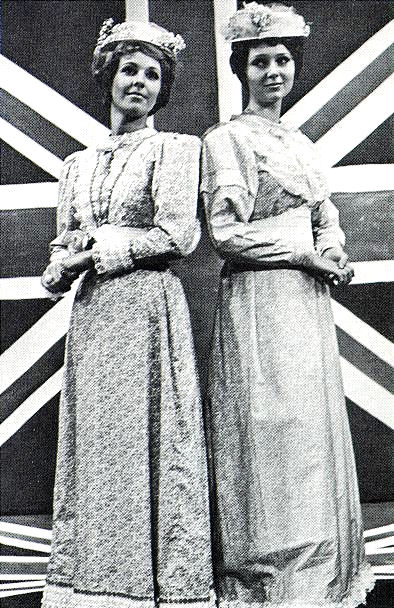 I’ll not list those other members here, though you can read about some of them on Pete’s website, but some names stood out: those of the girl singers. Most fortuitous for the Atkin and James partnership was the presence in Cambridge at that time of some talented young singers among the town's female students, notably Maggie Scott (later Henderson) and Julie Covington. They became part of Footlights — like all members they were required to audition and be elected — and their voices inspired Clive to pen a number of love-song lyrics written from the lady’s point of view.
I’ll not list those other members here, though you can read about some of them on Pete’s website, but some names stood out: those of the girl singers. Most fortuitous for the Atkin and James partnership was the presence in Cambridge at that time of some talented young singers among the town's female students, notably Maggie Scott (later Henderson) and Julie Covington. They became part of Footlights — like all members they were required to audition and be elected — and their voices inspired Clive to pen a number of love-song lyrics written from the lady’s point of view.
Pete and Clive’s songs were an immediate hit with the student audiences, emboldening the duo to take seriously the prospect of a songwriting career, creating songs for big-name artists on the established ‘Tin Pan Alley’ model. To further this ambition — and this was still only the late 1960s — they brought together their revue colleagues to record two demo albums of the songs, with the voices of Pete Atkin and Julie Covington featuring prominently. They're hard to find now — just 99 copies of each were pressed — but the exercise led to recording contracts with Philips/Fontana (PolyGram), who released Pete’s first solo LP in 1970 (“Beware of the Beautiful Stranger”) and with Columbia Records (EMI) in 1971 for Julie’s debut, “The Beautiful Changes” — essentially a collection of James/Atkin songs. (Julie included two songs by other composers, ‘He Just Don't Appeal To Me’ by Porter Grainger, and Don Fraser’s setting of the William Blake poem ‘My Silks And Fine Array’'.)




‘Cuddly Ken’ and me
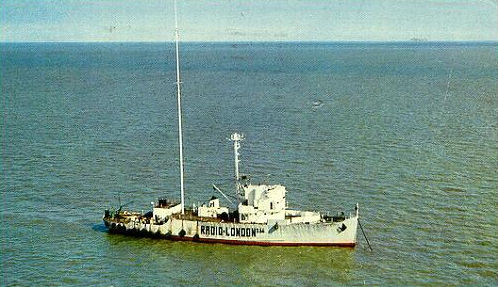
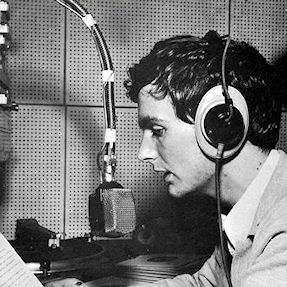 Offshore radio provided a lifeline for the British pop fan through the 1960s. Having grown up with Radio Luxembourg, now all of a sudden I had access to half-a-dozen shipboard radio stations offering quality music, unconstrained by ‘needle-time’, BBC pluggers and in-house covers, and with informed but unobtrusive DJ support (often beyond their nominal ‘Top-40’ format); their 50-kilowatt transmitters delivered loud, clear and fade-free reception on the medium-wave band throughout the day. My habit, while working, was to stay tuned to one of these stations until they uttered too many inanities or played something tediously awful, at which point I’d swing to the next so-called ‘pirate’ up the dial and stick with them for a while. It didn’t take me long to realise I was settling on offshore Radio London (styling itself ‘Big-L’, ‘Wonderful Radio London’ on 266 metres) far longer than any of the others, and enjoying their lively, well-informed and informative presentation by true enthusiasts including Tony Windsor, Keith Skues, Ed Stewart, Dave Cash, John Peel and, above all, Kenny Everett.
Offshore radio provided a lifeline for the British pop fan through the 1960s. Having grown up with Radio Luxembourg, now all of a sudden I had access to half-a-dozen shipboard radio stations offering quality music, unconstrained by ‘needle-time’, BBC pluggers and in-house covers, and with informed but unobtrusive DJ support (often beyond their nominal ‘Top-40’ format); their 50-kilowatt transmitters delivered loud, clear and fade-free reception on the medium-wave band throughout the day. My habit, while working, was to stay tuned to one of these stations until they uttered too many inanities or played something tediously awful, at which point I’d swing to the next so-called ‘pirate’ up the dial and stick with them for a while. It didn’t take me long to realise I was settling on offshore Radio London (styling itself ‘Big-L’, ‘Wonderful Radio London’ on 266 metres) far longer than any of the others, and enjoying their lively, well-informed and informative presentation by true enthusiasts including Tony Windsor, Keith Skues, Ed Stewart, Dave Cash, John Peel and, above all, Kenny Everett.
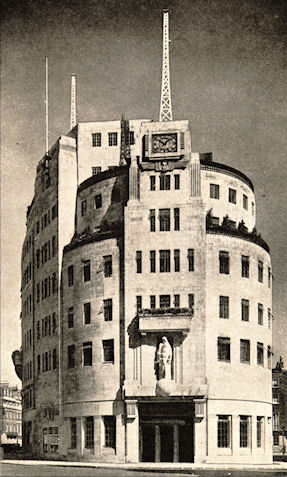 Kenny was a technician at heart, an audio tape enthusiast and wireless wizard since his early teens. His supreme skill lay in assembling multitracked station promo and ident jingles of his own devising over a vintage or classical instrumental base, stacking layers of his own harmony singing and cueing them live into the broadcast material with millisecond precision. His humour was original, zany but modest and often ironic — he hadn’t yet developed the outrageously wacky, flamboyant persona of his later TV shows. And his choice of material — he drew up his own playlists, often to the annoyance of his radio bosses — was intelligent and eclectic. He became hugely influential in pop and rock radio presentation: his style was widely imitated (you name the names) and there was even a genre of quirky British post-psych, pre-prog, melodic vocal pop singles that could almost have been designed with Ken’s turntable as their target.
Kenny was a technician at heart, an audio tape enthusiast and wireless wizard since his early teens. His supreme skill lay in assembling multitracked station promo and ident jingles of his own devising over a vintage or classical instrumental base, stacking layers of his own harmony singing and cueing them live into the broadcast material with millisecond precision. His humour was original, zany but modest and often ironic — he hadn’t yet developed the outrageously wacky, flamboyant persona of his later TV shows. And his choice of material — he drew up his own playlists, often to the annoyance of his radio bosses — was intelligent and eclectic. He became hugely influential in pop and rock radio presentation: his style was widely imitated (you name the names) and there was even a genre of quirky British post-psych, pre-prog, melodic vocal pop singles that could almost have been designed with Ken’s turntable as their target.
When in 1967 the law was changed, making it illegal to support stations broadcasting to the UK from international waters, Everett, a closet BBC fan, transferred to the nascent BBC Radio One and became one of the first to implement a DJ-operated studio within the walls of Broadcasting House, albeit under the supervision of a staff producer.
I listened to the Kenny Everett Show whenever I could — since 1966 I’d also been employed by the Corporation, looking after their 50kW transmitters, television transmitters in my case. I say ‘the Corporation’ because that’s what insiders called it. Outside, the idea of vocally abbreviating ‘BBC’ didn’t seem to work, until Everett came along and referred cheerily to ‘The Beeb’. Now everyone calls it that. Kenny was a friend of record producer Don Paul, and one Saturday in the spring of 1970 he introduced a pre-release tape of a new record by someone he dubbed the ‘all-time mystery singer’. The song was ‘Master of the Revels’ and it had that whimsical but intricate Everett appeal, despite being unlike anything else he’d ever played. We had to wait a week before Kenny revealed this artist’s identity, playing another of his songs, this time ‘Girl on the Train’. It was Pete Atkin, and I was hooked.
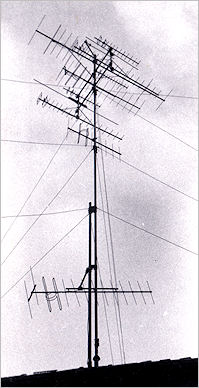 Kenny later mentioned London Weekend Television’s late-night revue series “What are you doing after the show”, featuring Pete with some of his Footlights contemporaries, including Clive, Julie, Russell ‘Dai’ Davies and Maggie Scott. It wasn’t shown in my region at the time, but I didn’t let such technicalities as radio-wave propagation stand in my way: this splendid show opened my ears to many more of the songs.
Kenny later mentioned London Weekend Television’s late-night revue series “What are you doing after the show”, featuring Pete with some of his Footlights contemporaries, including Clive, Julie, Russell ‘Dai’ Davies and Maggie Scott. It wasn’t shown in my region at the time, but I didn’t let such technicalities as radio-wave propagation stand in my way: this splendid show opened my ears to many more of the songs.
Playing the clubs

After graduating, Pete set out to further the James/Atkin songwriting partnership. Over the next few years, Clive’s pen combined with Pete’s piano and guitar to produce well over 100 songs, but the songs found few takers in the music business. Suddenly everyone was a songwriter, and few wanted to cover a contemporary’s material, however good it was. Through the early seventies he recorded five more LPs, all to high critical acclaim, but never selling more than a few thousand copies of each. He supported himself and his record sales by touring almost continuously, sometimes solo and sometimes with his own rock band, playing theatres, students’ unions (where the gigs with a band went down a storm) and making solo appearances at folk clubs. No, he didn’t play folk, but where else does a guy with a guitar earn a crust?


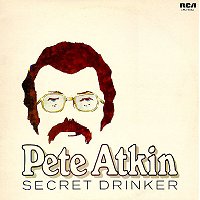

His final mainstream album was ‘Live Libel’ a contract-fulfillment job assembling some of the clever jokey songs he’d used as comic interludes at his live gigs. As the seventies wore on he toured with Clive James for the first time, Clive providing hilarious monologues between Pete’s songs. But pop was changing, fragmenting into tightly-defined genres and sub-genres, none of which would accommodate a James/Atkin work. And punk was sweeping away craft across the business. Pete assembled a ‘best of’ album and toured it with a band, and then threw in the towel.
During the next twenty years he was to enjoy success in a new field, as a producer of comedy panel games and other radio Light Entertainment offerings at the BBC, as well as a long-running historical chronicle of Britain. He didn’t totally give up on the music: a handful of clubs up and down the land would faithfully book him for a one-night appearance year after year, but these became little more than a diversion from his day job of jollifying the wireless.
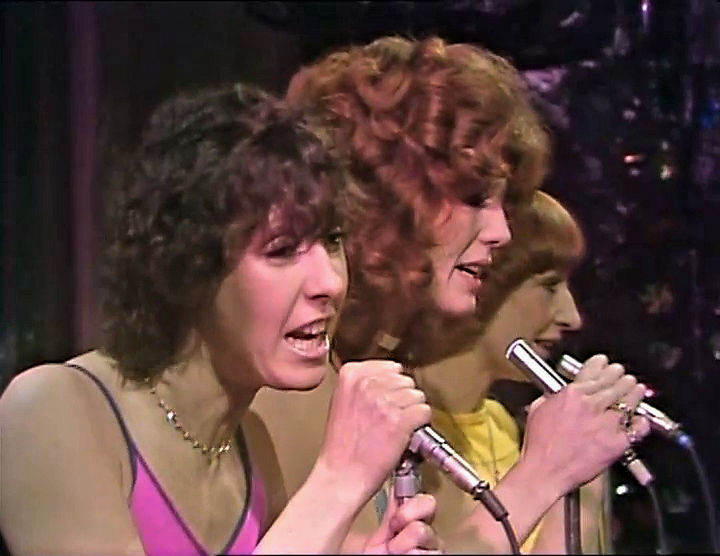
Julie began an acting career, appearing in dramatic roles with the Joint Stock and National Theatre companies and singing roles in ‘Godspell’ and the National’s ‘Guys and Dolls’, as well as guesting on various artists’ recordings in the folk and rock idioms, including Ashley Hutchings’ Albion Band series and Jeff Wayne's ‘War of the Worlds’. She made numerous film and TV appearances, was a regular on ‘Play Away’, starred in Thames Television's ‘Rock Follies’ series, and had a worldwide No.1 hit with the original recording of Rice and Lloyd Webber’s ‘Don’t Cry For Me Argentina’. As for Clive, well, everyone knows. He was always destined for fame: he became a near-permanent feature of late-night TV shows, at the same time revolutionising the art of television criticism.
Why Monyash?
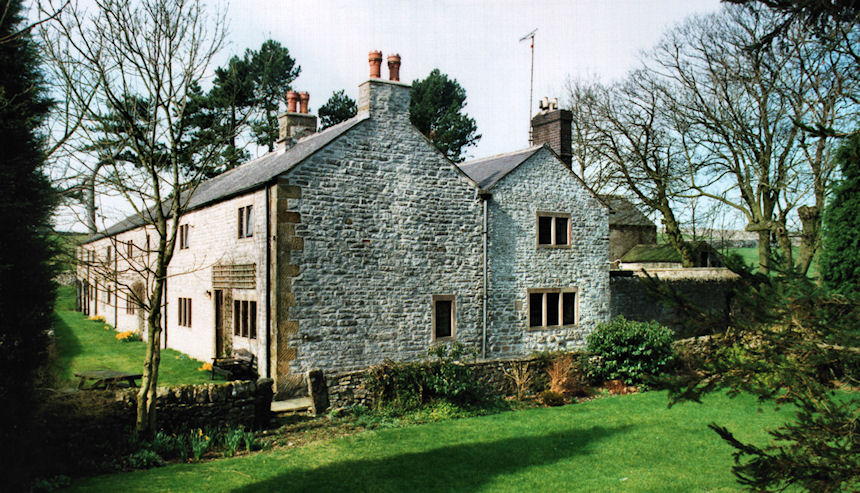
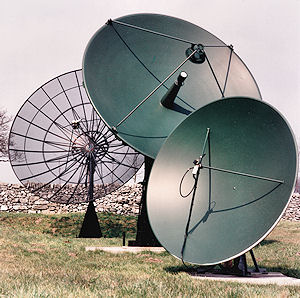 In 1991 my wife Carole and I bought a farmhouse with nine acres of pasture-land on the western edge of this quiet village in Derbyshire’s Peak District. For the previous eight years we’d lived in a gamekeeper’s lodge in the Forest of Dean, but needed to move closer to our ageing parents in Lancashire and Yorkshire. After obtaining planning permission (a far from routine task for technology in a national park) I installed my remotely-controlled satellite observatory at the top of our largest field — an elevated site to ensure horizon-to-horizon coverage; on the remainder of the land I grazed sheep — not my own.
In 1991 my wife Carole and I bought a farmhouse with nine acres of pasture-land on the western edge of this quiet village in Derbyshire’s Peak District. For the previous eight years we’d lived in a gamekeeper’s lodge in the Forest of Dean, but needed to move closer to our ageing parents in Lancashire and Yorkshire. After obtaining planning permission (a far from routine task for technology in a national park) I installed my remotely-controlled satellite observatory at the top of our largest field — an elevated site to ensure horizon-to-horizon coverage; on the remainder of the land I grazed sheep — not my own.
There was talk of organising an annual folk festival for the village, and Dale House Farm seemed the ideal location. I wasn’t overly keen on the idea at first, but when we began to consider who might top the bill, Pete’s name came up. I knew he still played occasional club dates, and we’d idly wondered over the years whether he might consider a private performance for us. Now Carole proposed a special event combining a Pete Atkin show with the Monyash festival, to celebrate my 50th birthday, our 15th wedding anniversary and five years in the farmhouse, all at one go (those dates had slipped a year or so by the summer of ’97). But the whole thing was now looking more promising.
At that time Pete was freelancing as a radio producer for the BBC in Bristol, so I knew how to contact him. Public access to the Internet was new, and my first thought was to build a website to publicise his songs to the digital generation, in the hope, fairly remote at that time, of prompting a CD re-issue of the long-deleted albums. He responded very positively to my suggestion, and the site, named “Smash Flops” began with a single page of introduction and a listing of his LPs, together with an invitation for fans to get in touch by e-mail with a view to creating a mailing list.
I’d seen him in concert a few times in the 1970s, but we’d never spoken. This I remedied with a visit to his next club gig, which happened to be in the upstairs room of a pub in Eastbourne on the Sussex coast, at the end of July 1996. Pete was very generous with information for the website, giving me access to his scrapbooks, photos and masses of publicity material dating all the way from his Cambridge days to his ‘Master of the Revels’ tour in 1977. He also provided me with copies of the two extremely rare Footlights demonstration LPs, and some demo tracks of unreleased songs he’d prepared in 1975 for a putative ‘next’ album. I thought I was familiar with the James/Atkin oeuvre, but here were 30-odd new (to me) songs!
 To mount a festival we needed the support of the village, so it was always going to be more than a Pete Atkin show — his name was unknown in those parts, and he wasn’t a folk artist, but the event had to conform to some extent to the public’s expectations of a folk festival. We planned for a modest 500 attendance, but we still required a permit, a marquee, audience seating, a stage, a secondary stage and tent, a folk-dance platform, a bar, a food truck, ice cream, car parking, signage and marshalling, camping facilities, toilets, refuse bins, lighting, power generation, a PA system, first aid, insurance, publicity and ticketing. Rather too much for us to handle alone. We enlisted some of our friendly village neighbours to assist with obtaining the necessaries; in return we donated the proceeds of the event to the village church restoration fund. Carole would act as the overall organiser and central point of contact for all these activities.
To mount a festival we needed the support of the village, so it was always going to be more than a Pete Atkin show — his name was unknown in those parts, and he wasn’t a folk artist, but the event had to conform to some extent to the public’s expectations of a folk festival. We planned for a modest 500 attendance, but we still required a permit, a marquee, audience seating, a stage, a secondary stage and tent, a folk-dance platform, a bar, a food truck, ice cream, car parking, signage and marshalling, camping facilities, toilets, refuse bins, lighting, power generation, a PA system, first aid, insurance, publicity and ticketing. Rather too much for us to handle alone. We enlisted some of our friendly village neighbours to assist with obtaining the necessaries; in return we donated the proceeds of the event to the village church restoration fund. Carole would act as the overall organiser and central point of contact for all these activities.
The decision was taken to make it a one-day event, divided into two parts. The afternoon would be pure folk, with a variety of local bands, singers and dancers in the two tents. To head up this segment we enlisted Tony Capstick, a well-loved Yorkshire folk singer, comedian and radio personality. Then for the evening session (ticketed separately) we had Pete’s show, with support artist Brent Mason. There was another Brent Mason around at the time, a country guitarist from Nashville, but ours was the talented Canadian singer-songwriter from New Brunswick, visiting the UK for the first time and looking for gigs. He’d seen some of our early publicity material and asked if he could play. As it turned out he proved the perfect support artist for Pete’s concert.
Field of Dreams
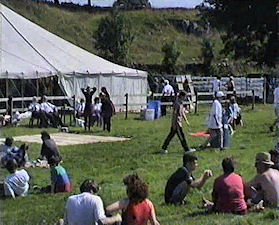
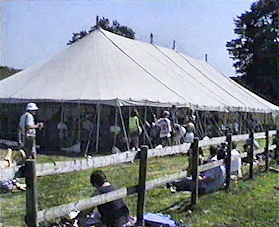
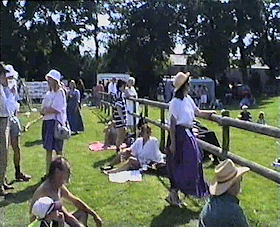
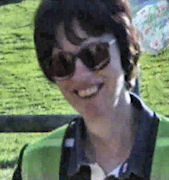
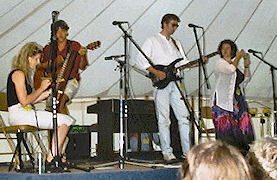
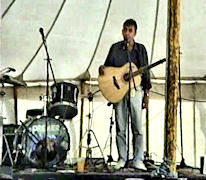
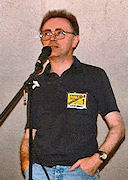 Events like ours are always prey to the vagaries of the English climate. We chose a weekend in August, knowing that a proportion of our potential audience-base would be away on summer holidays, but accepting that this might be preferable to the higher probability of wash-out in, say, June. We guessed well: the Saturday dawned warm and sunny. The ‘back yard’ in question was in fact the former horse-schooling paddock in the lower field of our farmstead, with plenty of room for the main marquee. We built it, and he came. Not only that, but much to our last-minute surprise he brought a friend!
Events like ours are always prey to the vagaries of the English climate. We chose a weekend in August, knowing that a proportion of our potential audience-base would be away on summer holidays, but accepting that this might be preferable to the higher probability of wash-out in, say, June. We guessed well: the Saturday dawned warm and sunny. The ‘back yard’ in question was in fact the former horse-schooling paddock in the lower field of our farmstead, with plenty of room for the main marquee. We built it, and he came. Not only that, but much to our last-minute surprise he brought a friend!
Pete had remained in occasional touch with Julie Covington over the years. She hadn’t sung in public for quite a while, but apparently when Pete mentioned it to her she was amenable to a one-time guest appearance. Carole nearly dropped the phone when Julie called and said she’d like to sing at our event. Pete met her off the London train in Sheffield on the morning of the show, and in the afternoon they rehearsed in the house the short-list of songs they’d chosen to do together, while the folk festival was in full swing, basking in full sunshine in the field outside.
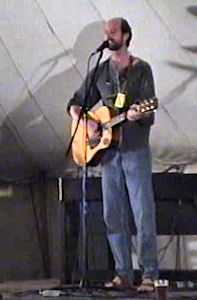
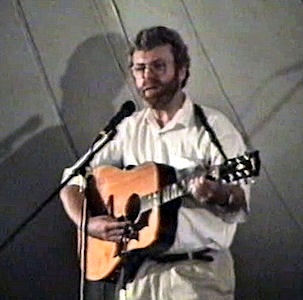
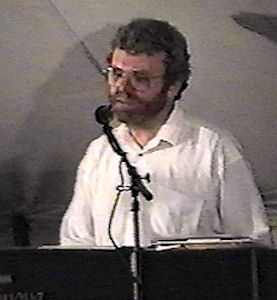 Local and regional publicity via posters, newspaper and radio plugs, together with my on-line mailing list (by then a year old and some 135-strong, and shortly to morph into Midnight Voices), had been successful in attracting ticket sales of over 200 for the evening performance, including some from beyond our shores. After Brent’s engaging set of his own songs (the more impressive considering the reportedly high time he’d had in the village pub the previous night with a group of Atkin fans), my newly-acquired Clavinova digital piano was installed centre-stage. The audience quietly took their seats and the anticipation was palpable. Pete came on stage to an intense roar of appreciation. He placed his National Steel on its stand, tuned his Gibson and asked the audience where they’d been these last 25 years. His first song was familiar, “Have You Got A Biro I Can Borrow”, written in December 1967, which he followed with the perennial favourite “Girl on the Train”. He then sat at the piano and we were treated to the first-ever public performance of “History and Geography”. The evening continued with a total of 31 songs, including “Canoe” from 1975: one of Pete and Clive’s greatest. It had been an audience favourite at late gigs in the 1970s but had never been released on record.
Local and regional publicity via posters, newspaper and radio plugs, together with my on-line mailing list (by then a year old and some 135-strong, and shortly to morph into Midnight Voices), had been successful in attracting ticket sales of over 200 for the evening performance, including some from beyond our shores. After Brent’s engaging set of his own songs (the more impressive considering the reportedly high time he’d had in the village pub the previous night with a group of Atkin fans), my newly-acquired Clavinova digital piano was installed centre-stage. The audience quietly took their seats and the anticipation was palpable. Pete came on stage to an intense roar of appreciation. He placed his National Steel on its stand, tuned his Gibson and asked the audience where they’d been these last 25 years. His first song was familiar, “Have You Got A Biro I Can Borrow”, written in December 1967, which he followed with the perennial favourite “Girl on the Train”. He then sat at the piano and we were treated to the first-ever public performance of “History and Geography”. The evening continued with a total of 31 songs, including “Canoe” from 1975: one of Pete and Clive’s greatest. It had been an audience favourite at late gigs in the 1970s but had never been released on record.
 So much, and so much better than anyone could have hoped for. So it was to everyone’s surprise and greater delight when, towards the end of his first set, Pete invited Julie Covington onto the stage. She was clearly a little nervous, but gave a flawless performance of four of Pete's songs beginning with “The Magic Wasn’t There”, to an ecstatic response from the audience. The magic of her voice certainly was there.
So much, and so much better than anyone could have hoped for. So it was to everyone’s surprise and greater delight when, towards the end of his first set, Pete invited Julie Covington onto the stage. She was clearly a little nervous, but gave a flawless performance of four of Pete's songs beginning with “The Magic Wasn’t There”, to an ecstatic response from the audience. The magic of her voice certainly was there.
While introducing these songs on stage Julie explained the inclusion of the two non-Atkin songs on her LP: “Just to prove my independence from Pete and Clive I had to find a song that was written by somebody else, to just sneak in there on the album, just to prove that I didn’t need them. But of course I absolutely did, and there is no question whatever in my mind, that if I hadn’t known Pete and Clive I would never have dreamt of thinking that I could earn my living as a professional singer.”
At the end of Pete’s second set Julie came back on as the audience clamoured for an encore, and sang “The Standards Of Today”. She remained on stage and joined in with Pete’s finale of “Ready For The Road”, assisted on the chorus by Brent Mason and Monyash’s own fine folk voice Ed Driscoll. And most of the audience. Altogether Pete had been on stage for about two and three-quarter hours — not bad for a ‘comeback’ gig.
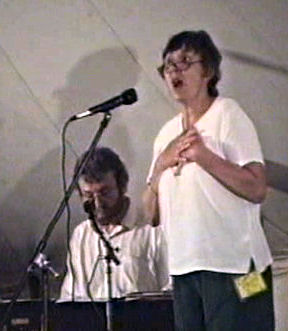
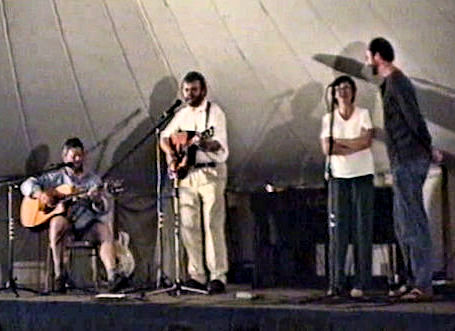 Just in time for the event, word came through that Colin Miles of See For Miles Records was planning to reissue all of the six 1970s Pete Atkin LPs, on CD. Now we were getting somewhere!
Just in time for the event, word came through that Colin Miles of See For Miles Records was planning to reissue all of the six 1970s Pete Atkin LPs, on CD. Now we were getting somewhere!
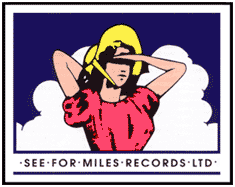



Onward!
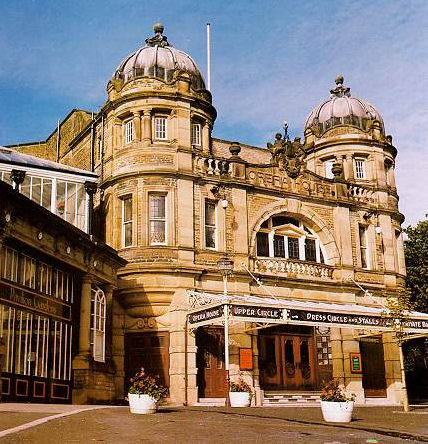

The Monyash saga continued: the next year’s (1998) event was totally different, and Pete brought a different friend. The nearest full-scale theatre to our village was Buxton Opera House, ‘The Theatre in the Hills’: a classic Matcham-designed proscenium house in the Derbyshire spa town, with a capacity of 900. Carole again used her organisational flair to book the Opera House for a one-night-only gig featuring Pete Atkin with the support of... Clive James. Naturally Clive’s name floated to the top in most of the publicity material, but we didn’t mind. The duo reprised their words-and-music act from the “Together at Last” tour of 1975, and the 570-strong audience went home happy. It gave me the opportunity to state (mischievously, Eric Morecambe fashion) that Julie Covington and Clive James had slept in our spare bed, but not at the same time. Pete and his wife occupied our guest cottage.
 For 1999 we wanted to repeat our festival success, but without the folk element. The solution was a private ‘Garden Party’ event for Midnight Voices members. Same location, same marquee, this time with mains power laid on, so no generator noise to contend with. Afternoon sessions included a discussion and analysis of Clive James lyrics, moderated by Mel Powell, a ‘covers’ set by Pete featuring his own interpretations of songs by (among others) Rodgers and Hart, Chuck Willis, Steely Dan and the Barenaked Ladies, and a performance of James/Atkin songs by MV’s own Pete Atkin tribute band The Beautiful Changers. Once again Pete floored everyone with a 19-song solo set in the evening, and then surprised the Changers by inviting them back on stage to accompany him on a reprise of ‘Rain-Wheels’.
For 1999 we wanted to repeat our festival success, but without the folk element. The solution was a private ‘Garden Party’ event for Midnight Voices members. Same location, same marquee, this time with mains power laid on, so no generator noise to contend with. Afternoon sessions included a discussion and analysis of Clive James lyrics, moderated by Mel Powell, a ‘covers’ set by Pete featuring his own interpretations of songs by (among others) Rodgers and Hart, Chuck Willis, Steely Dan and the Barenaked Ladies, and a performance of James/Atkin songs by MV’s own Pete Atkin tribute band The Beautiful Changers. Once again Pete floored everyone with a 19-song solo set in the evening, and then surprised the Changers by inviting them back on stage to accompany him on a reprise of ‘Rain-Wheels’.
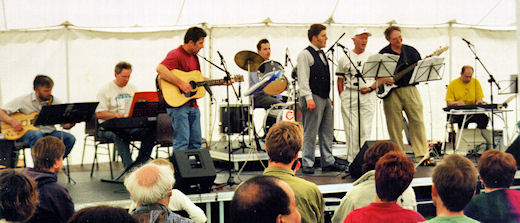
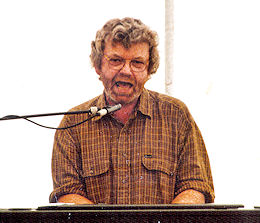
 One big news item for us that summer was See For Miles’s addition to their CD catalogue of Julie Covington’s debut album “The Beautiful Changes”. The complete 1970s Atkin LP collection was now in the shops again! And we still had in our future (though we didn’t yet know it) albums of newly-composed James/Atkin material (The Lakeside Sessions, Winter/Spring, Colours of the Night), two UK tours and an Australian tour! A pity Kenny wasn’t around to see it.
One big news item for us that summer was See For Miles’s addition to their CD catalogue of Julie Covington’s debut album “The Beautiful Changes”. The complete 1970s Atkin LP collection was now in the shops again! And we still had in our future (though we didn’t yet know it) albums of newly-composed James/Atkin material (The Lakeside Sessions, Winter/Spring, Colours of the Night), two UK tours and an Australian tour! A pity Kenny wasn’t around to see it.
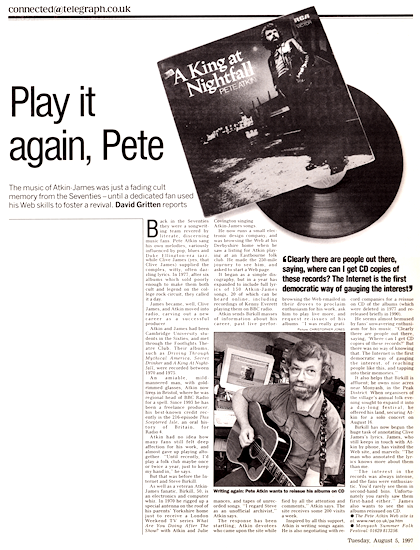
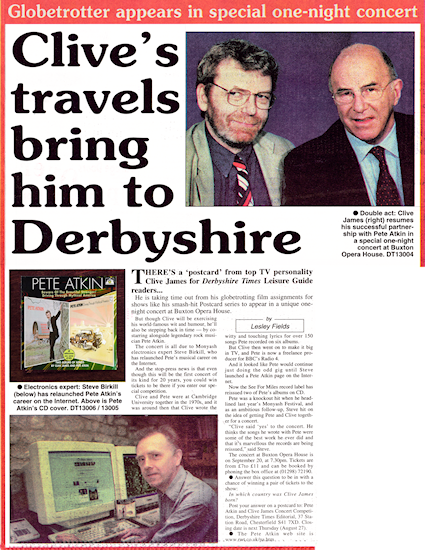 Reaching the thousands of erstwhile Pete Atkin fans was always going to be a challenge. Those who’d bought all his records in the 1970s were unlikely to be Internet-savvy in the 1990s; those who were belonged to an entirely different demographic: they’d never heard of him. Yet MV continued to grow, and by the end of 1999 we had over 200 members with 3,800 messages posted (these totals were to increase to 915 members and 10,945 posts by the time ‘The Voices’ switched from an e-mail list to a Web forum in July 2004.)
Reaching the thousands of erstwhile Pete Atkin fans was always going to be a challenge. Those who’d bought all his records in the 1970s were unlikely to be Internet-savvy in the 1990s; those who were belonged to an entirely different demographic: they’d never heard of him. Yet MV continued to grow, and by the end of 1999 we had over 200 members with 3,800 messages posted (these totals were to increase to 915 members and 10,945 posts by the time ‘The Voices’ switched from an e-mail list to a Web forum in July 2004.)
Anyway, in 2000 I quit the satellite business, we sold the farm (literally) and moved into a beautiful Victorian house in the hilly western suburbs of Sheffield; just outside the Peak District, and better connected in every way. But no field. Still we managed to organise more gigs for Pete and his Midnight Voices followers. But that’s a whole other story.
Photo credits
David Bondy, Sylfest Muldal, Alexis Birkill, Daily Telegraph, Derbyshire Times, Thames Television, BBC, EMI, PolyGram, RCA, See For Miles, Buxton Opera House, Anonymous.
Online Resources
I planned originally to put a sclonch of hyperlinks in this paragraph, to encourage the reader in his or her exploration of Pete’s website and Clive’s archive. But then I realised that the number of links I’d want to include — there are hundreds of James/Atkin pages here — could be off-putting or confusing, and might even result in none of the links being followed. Instead, I’m keeping it simple: just 5 links:
Smash Flops: the main page at https://www.peteatkin.com/pa.htm
The entry page to Pete’s website. From here you can check the latest releases and publications, see what gigs are coming up, choose from a range of reviews, reference and biographic materials, all with images, sign up for Pete’s newsletter, become a Midnight Voice, discover The Shrinks, listen to all the tracks from Pete’s six 1970s releases, or watch a bunch of videos, currently numbering 23. Most of the pages linked from here contain further links to different parts of the site, so it’s good to browse. The presence of scripts for all these media files can make the page a little slow to load — please be patient.
The Pete Atkin Discography at https://www.peteatkin.com/disworks.htm
All (almost) that Pete ever did, with streaming audio, lyrics, chords, lead sheets, session notes, annotations, even some parody lyrics. Not just the mainstream albums, but demos, radio sessions, live performances, interviews and podcasts. Two kinds of media player are included, with a selection of alternative material according to which you choose. But here’s a caveat concerning Julie Covington’s recordings: she agreed we could carry the Monyash souvenir CDs on the condition that they were made available to Monyash Festival attendees and Midnight Voices members only, and that we would not gain financially from her work. For this reason we have restricted her material to users with an active MV log-in; otherwise a pseudo-404 (‘File not found’) page is displayed. While you're logged in, check out the unlisted items accessed via the chevrons on the mini-player pages.
Midnight Voices: the Fan Forum at https://www.peteatkin.com/short
The direct descendant of the mailing list established in the lead-up to Monyash 97, MV is a Web-based discussion forum which anyone can search and read, but you’ll need membership in order to post a message. Membership is free of charge and registration is only a simple formality. MV comes with a personal message feature, so you can message any other member, including Pete or myself, quite privately; useful if you don’t know our e-mail addresses. MV is organised into ‘Boards’, specialising in Music, Lyrics, Gigs and suchlike, though most members now keep up to date via the ‘Most Recent Posts’ index at the bottom of the main page, also occupying the whole of this ‘Short’ version of the page.
The Hillside Music online shop at https://www.peteatkin.com/hillshop.htm
Pete Atkin’s own mail-order operation, based in Bristol: place an order here and you’ll receive your CDs by post in a matter of days. Unfortunately the re-issue CDs are now all sold out: the SFM pressings are long gone, and the replacement issues from Demon/Edsel were going strong until the catastrophic fire at the Sony distribution centre in Enfield in August 2011 destroyed all remaining stock. Especially sad, as the company’s philosophy was to keep product on their books long-term. But the CDs of new material, Pete’s private pressings, are still available.
The Clive James Website Archive at https://archive.clivejames.com
My project here is to reconstruct the site formerly known as clivejames.com in the form envisaged by Clive almost 20 years ago. The original files were lost in 2018, and a new, more modern-styled site created, featuring mostly highlights. My mission is to use this subdomain to put back the depth of material that was originally on the main site, while adding much that Clive would have seen included if only he’d had the time. I’m currently working on the complete Observer ‘Television’ column (in the ‘Essays’ section), but there’s so much more: most of his books and poems are now included, plus radio and television broadcasts. Pertinent to this page, a TV interview with Kenny Everett, 20 years on from the boost he gave Pete’s music in 1970: go to the ‘Video/Celebrity Guests’ section.
Midnight Voices is pretty quiet these days: down from an average of 5 posts per day back then to more like 5 per month now! I blame Facebook and the ubiquity of mobile-device access for the fact that few today bother to revisit a website unless it’s constantly calling them, siren-like. Or maybe there was nothing left to say. Still, it would be good if long-standing members were to share their memories of Monyash and Buxton. MV awaits!
Stephen J Birkill
Webmaster, Smash Flops
Administrator, Midnight Voices
Curator, The Clive James Website Archive
16th August 2022